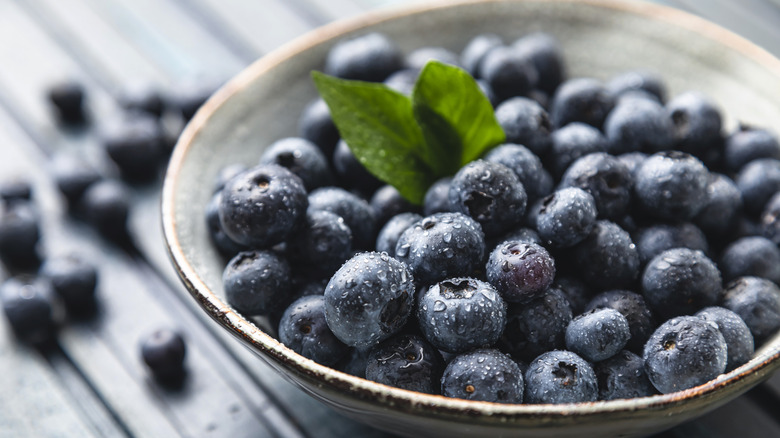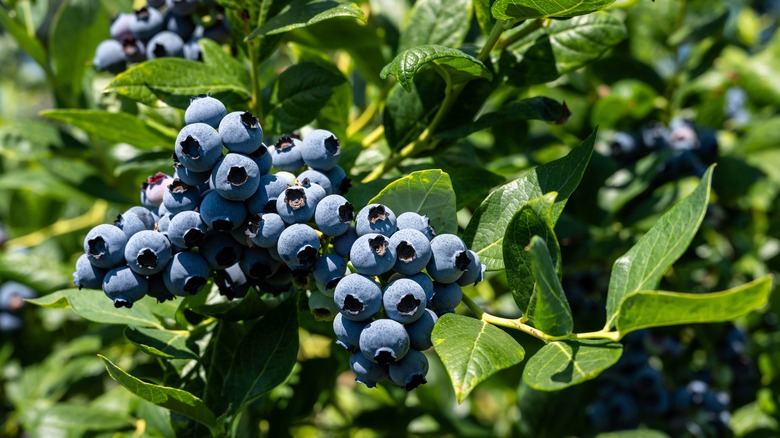We Can Thank This US State For Growing The Most Blueberries
Blueberries are a true American original. The beloved base of muffins and pies is native to the North American continent, where blueberries played an important role in the diets of many indigenous peoples. However, up until the last century, blueberries were exclusively foraged and harvested from the wild. The commercial cultivation of blueberries only got started in 1912. Fast forward, and now you can easily find the tastiest blueberries at the store. No more wandering the woods (unless you want to).
The first farm to cultivate blueberries was in New Jersey. A hundred years later, the state is still an important center of blueberry farming, but it only ranks as the fifth largest producer in the nation, according to World Population Review. These days, the leader in blueberry production lies on the opposite side of the country, in Washington.
The state of Washington produced approximately 90,000 tons of blueberries in 2021 (that's a lot of mixed berry scones). The next closest state in the rankings is Oregon, which produced 75,000 tons of blueberries in 2021. Georgia falls in third place, but at just over 43,000 tons of blueberries, there's a substantial drop off from second-place Oregon. The Pacific Northwest states dominate the blueberry business, and it's mostly thanks to their climate.
Why the Pacific Northwest dominates blueberry production
Blueberries thrive best in a very specific set of environmental conditions. They need humidity, but not heat, meaning they do best in regions with cold winters and very mild summers. Washington and Oregon are both famous (or perhaps infamous) for having rainy weather throughout most of the year, which keeps the air humid. Positioned on northern latitudes, these states also tend to have cool temperatures for much of the year.
The high latitude has two other important effects on blueberry growth. Firstly, during the summer, Washington experiences longer days than almost any other state, as much as 16 hours of light. Secondly, Washington experiences the most extreme difference between daytime temperature and nighttime temperatures of any state, a change known as diurnal shift. The dramatic swings from warm to cold and back help to develop the acid in blueberries, giving them a balance of sweet and tangy.
In short, the Pacific Northwest has the ideal climate for growing blueberries, but interestingly enough, the region didn't come to the forefront of blueberry production until the last decade. Up until 2015, Georgia led the nation in blueberry production, but throughout the 2010s, Washington experienced a rapid and dramatic expansion of blueberry farms. This happened because the demand for blueberries shot through the roof when they became trendy for their antioxidant content, making blueberries one of the top superfoods you can add to your diet.

